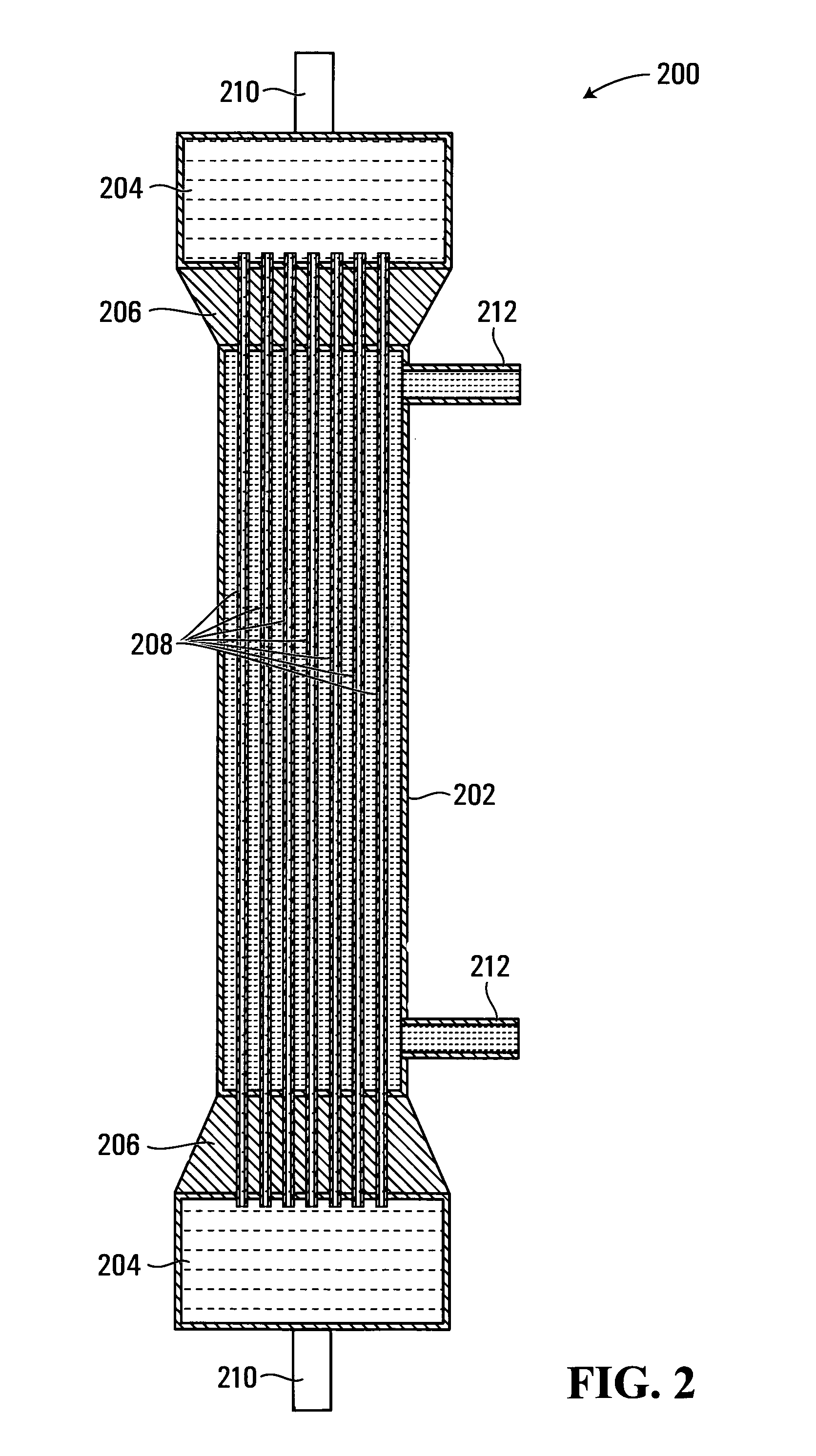Tubular fiber membrane with nanoporous skin
a fiber membrane and nanoporous skin technology, applied in the field of tubular fiber membranes, can solve the problems of reducing performance, clogging pores, and fiber membranes suitable for hemofiltration or hemodialysis may not be suitable for reabsorption or use as artificial renal proximal tubules, etc., and achieves the effect of reducing performance over time and clogging pores
- Summary
- Abstract
- Description
- Claims
- Application Information
AI Technical Summary
Benefits of technology
Problems solved by technology
Method used
Image
Examples
example ia
Preparation of Sample Hollow Fiber Membranes with Oil
[0120]Polyethersulfone (PES, average molecular weight (MW)=51 kDa, BASF™) and polyvinylpyrrolidone (PVP, average MW=25 kDa, Merck™) were slowly added to N-methyl-2-pyrrolidone (NMP) in a glass bottle. The concentrations of PES, PVP, and NMP for different samples are listed in Table I. The mixture was stirred until a homogeneous solution (referred to as the dope solution) was obtained. The dope solution was used to in an extrusion process to form the tubular fiber body, as further described below.
[0121]
TABLE IContents of Dope Solution (wt %) for Different Fiber SamplesSamplePESPVPNMPS118874S2181072S3161074S420872
[0122]A core solution was prepared using a biocompatible oil, FC3283 (3M™). FC3283 oil is immiscible with water and NMP, and has a density of 1820 kg / m3 and a viscosity of 1.4 cp. The core solution was used in the extrusion process to occupy the lumen space, as further described below.
[0123]The extrusion procedure was as de...
example ib
Sample Filtration Fiber Membrane (Comparison)
[0141]For comparison purposes, sample filtration fibers were fabricated using a conventional dry-wet-spinning process, with the same extruder as used in Example IA. The dope solution and the coagulation bath were prepared and the extrusion procedure was performed similarly as described in Example IA, with the changes noted below. In particular, the dope solution had 18 wt % of PES and 10 wt % of PVP in NMP. The dope solution was injected into the extruder at a flow rate of 0.2 ml / min was used. The core solution was formed of 10 vol % of NMP in water, and was injected into the extruder at a flow rate of 0.3 ml / min. The extruder exit was placed 10 mm above the primary coagulation bath.
[0142]FIGS. 5A, 5B, 5C and 5D show SEM images of a comparison filtration fiber membrane made according to the above procedure.
[0143]As compared to the sample fibers in Example IA, the sample fibers of Example IB had a different pore structure and pore size dis...
example ii
Preparation of Sample Hollow Fiber Membranes with Water / NMP Mixture as Core Solution
[0144]Sample fiber membranes were prepared according to the procedure of Example I, except that the core solution was a mixture of water and NMP.
[0145]An advantage of using H2O / NMP mixture of the core solution is that after the fiber membrane was formed, the core solution may be conveniently removed from the lumen through the membrane pores, such as by diffusion. In comparison, when oil is used as the core solution, the oil in the lumen was flushed out with water after the fiber membrane had been formed, as oil was immiscible with water or NMP.
[0146]Another advantage of using H2O / NMP mixture as the core solution is that the pore sizes on the inner surface of the fiber membrane can be conveniently tuned by varying the volume fraction of NMP in the core solution.
[0147]Test samples were formed with various NMP concentrations in the core solutions. The NMP concentration was varied from about 60 v % to 90...
PUM
| Property | Measurement | Unit |
|---|---|---|
| pore size | aaaaa | aaaaa |
| pore size | aaaaa | aaaaa |
| open pore area | aaaaa | aaaaa |
Abstract
Description
Claims
Application Information
 Login to View More
Login to View More - R&D
- Intellectual Property
- Life Sciences
- Materials
- Tech Scout
- Unparalleled Data Quality
- Higher Quality Content
- 60% Fewer Hallucinations
Browse by: Latest US Patents, China's latest patents, Technical Efficacy Thesaurus, Application Domain, Technology Topic, Popular Technical Reports.
© 2025 PatSnap. All rights reserved.Legal|Privacy policy|Modern Slavery Act Transparency Statement|Sitemap|About US| Contact US: help@patsnap.com



